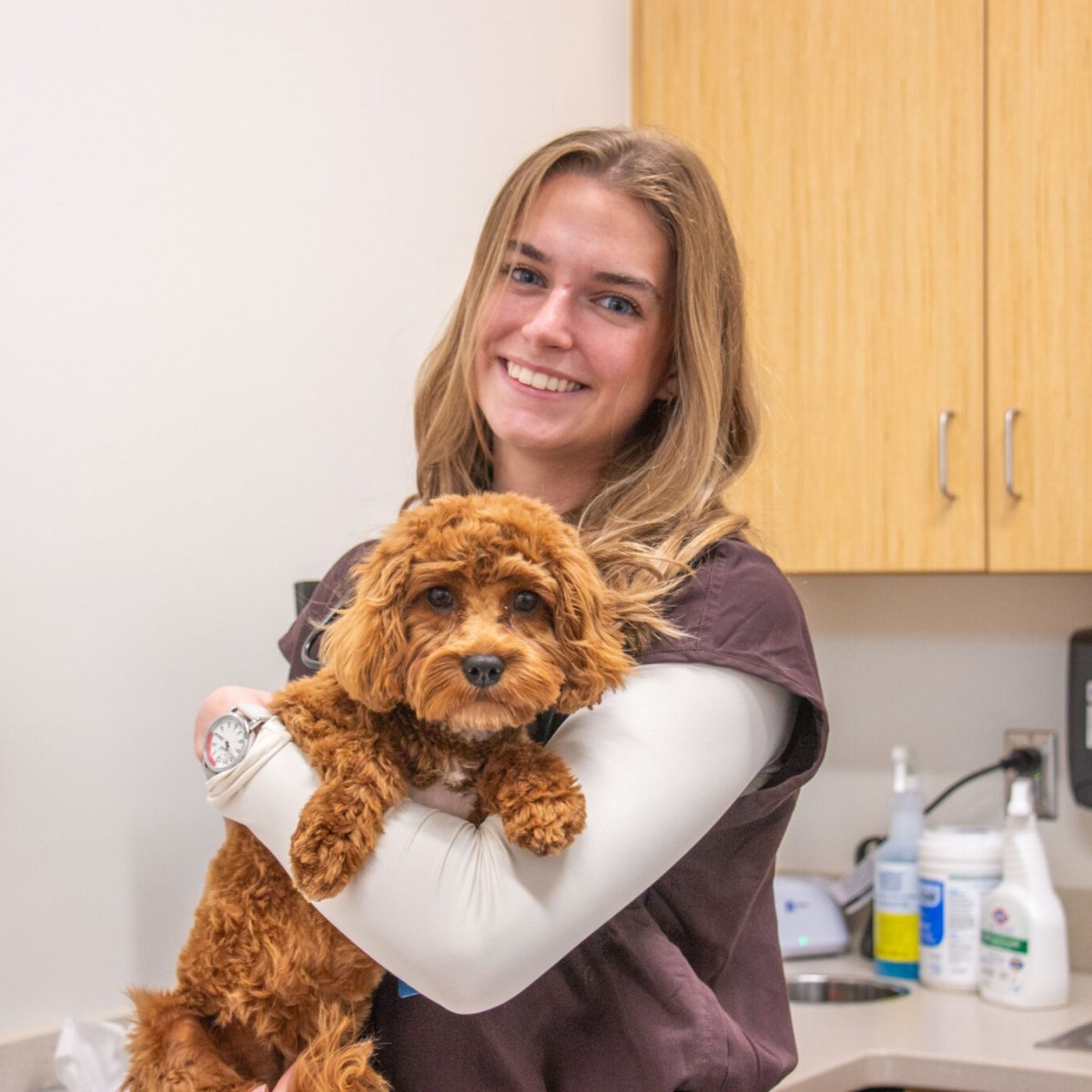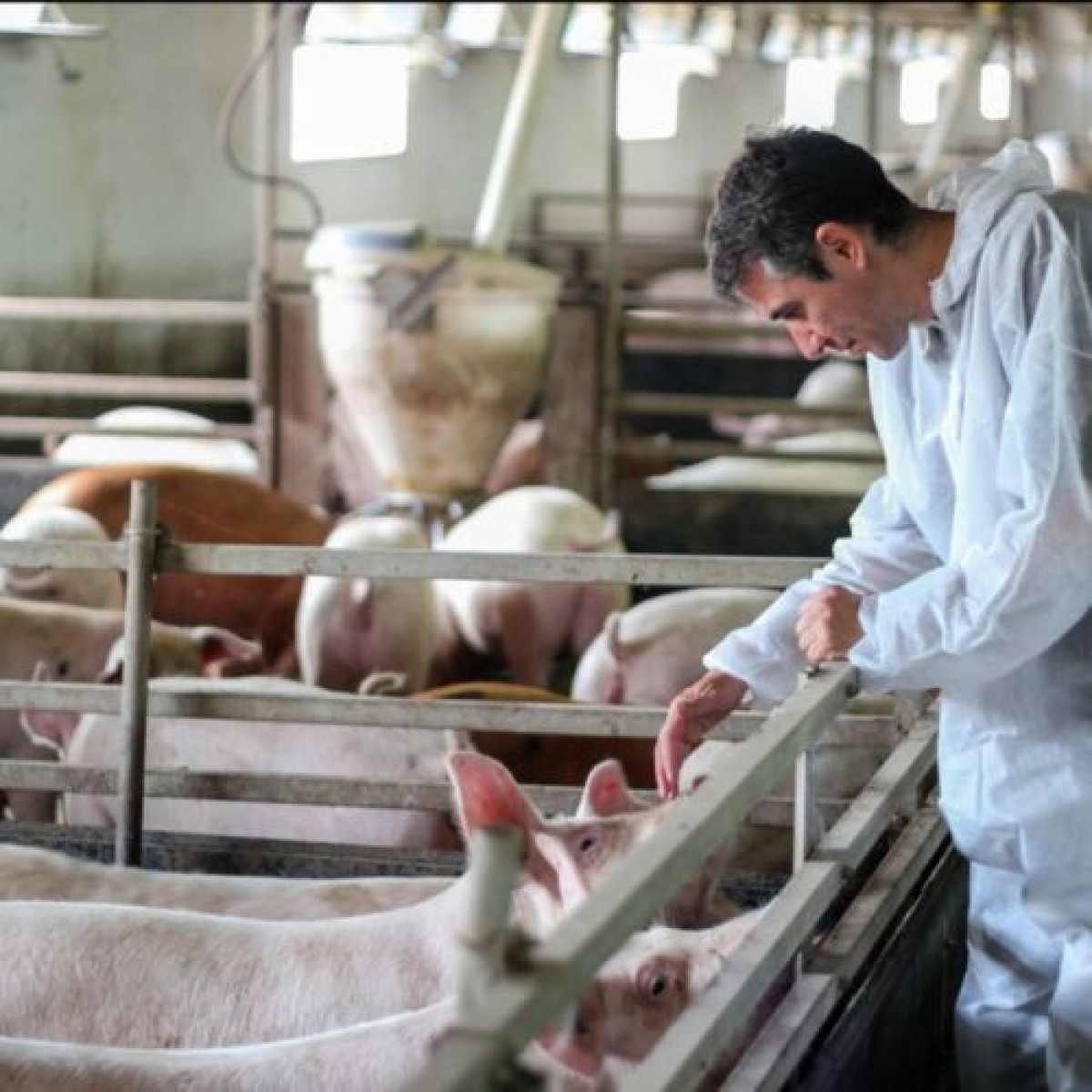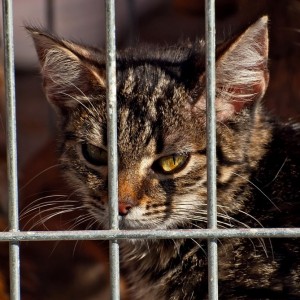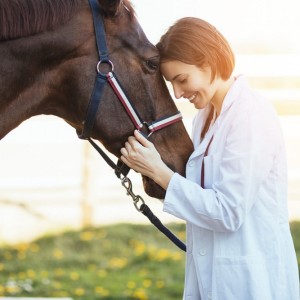Clinical and translational research gets boost from Ryley Fund
When Roxy arrived in April 2025 at UW Veterinary Care’s (UWVC) emergency department, she had a history of coughing, decreased energy level, and lack of appetite. The King Charles Cavalier Spaniel was quickly referred to the hospital’s cardiology department. Listening to the five-month-old pup’s heart and lungs, a team led by Heidi Kellihan (Department of Medical Sciences; section head of UWVC’s cardiology service) became worried she might have a congenital heart disease. Roxy was exhibiting complications of patent ductus arteriosus (PDA) — a heart defect that occurs when a blood vessel doesn’t close at birth — and was experiencing fluid buildup in her lungs.
The most effective way to treat PDA is to close it, according to Kellihan, meaning Roxy faced surgery. But at just seven pounds, she wasn’t a good candidate for the hospital’s usual treatment. Instead of what would have historically been an open chest surgery, the teddy bear-like puppy was treated using a new, minimally invasive procedure that placed a small plug in one of her heart vessels. To do so, Kellihan made a tiny nick in Roxy’s skin and completed the whole procedure through it. It was just the fifth time UWVC attempted the surgery. Roxy went home without any sutures and recovered well.
The surgery was made possible, in part, by the Ryley Clinical Innovation Fund, which covered about two-thirds of the cost of the new procedure. Established in January 2025 by UW alumni Gary Schwager (’75) and Gabrielle Banick (PhD ’89), the fund supports innovative clinical care at UWVC by funding learning opportunities for hospital clinicians, including mastering cutting edge technologies and travel to study new surgeries. It also helps cover the costs of new procedures like Roxy’s and to purchase state-of-the-art equipment, among other things.
The School of Veterinary Medicine (SVM) has a history of innovative clinical care and translational research that advances new diagnostic and treatment tools to benefit both animals and humans. The Ryley Clinical Innovation Fund bolsters the SVM’s and UWVC’s ability to develop new treatments and bring new knowledge to patients and their families.
“We have a 40-year history of being one of the most innovative vet schools in the world,” says Dean Jonathan Levine. “The connection between our veterinary teaching hospital and research space creates a collaborative engine — which is fueled by efforts like the Ryley Fund — that leads to innovative, amazing patient care.”
The Impetus Behind the Ryley Clinical Innovation Fund
Schwager and Banick, who met at a dog park and are longtime UWVC clients, have made annual donations to the SVM for years, including a contribution to the Animals Need Heroes Too campaign that funded the new SVM North building — home of the hospital’s state-of-the-art interventional cardiology suite.
“Donors made a huge investment into the interventional suite during our expansion project, and that allows us to do more of what we’re currently doing and to also look at cases in a new light, to see if there are new techniques that we can offer to new patient populations,” says Sonja Tjostheim (Department of Medical Sciences), also of UWVC’s cardiology service. “Things are changing rapidly in the veterinary cardiology space, and we want to bring new procedures to our clients and community.”
In 2017, Schwager’s daughter Whitney encouraged him to foster dogs with Madison-based rescue organization Fetch, where she has volunteered for years. Ryley, an Irish Setter, was Schwager’s first foster dog, and he and Banick happily became “foster fails” by adopting him at the end of his fostering period.
Ryley was found to have a heart murmur in 2020, and a year later he was diagnosed with myxomatous mitral valve disease — one of the most common types of acquired heart disease in older dogs. He became a cardiology patient at UWVC, where he was placed on a variety of medications, with several years of follow-up.
“He didn’t show obvious outward symptoms on most of the counts that concerned the clinical team, which was perplexing, and I saw how hard they worked to study and recommend the right medical care,” Schwager says. “Meds were added, adjusted, analyzed, and sometimes dropped, as care indicated.”
Ryley lived an otherwise normal life, enjoying walks, barking at squirrels, and playing at the dog park.
“Those six-plus years were so special, and as he started slowing down last year, we made sure to enjoy every second with him and make sure he had as much love as he was giving us,” Schwager says. “In the end, it was not at all apparent that any of his maladies took him early, it was likely just age. He had excellent medical care.”
The dedication of UWVC staff to Ryley’s care solidified Schwager and Banick’s commitment to supporting the SVM.
“Last year, after we lost Ryley, we said we’d like to do something in his memory,” Schwager says. “We got interested in supporting the technology that clinicians want to use to solve problems in new ways, tapping into new techniques and tools.”
The Importance of Donor Support
Today, the Ryley Clinical Innovation Fund is helping train clinicians, develop new procedures, and collaborate with other top veterinary schools. It also helps cover the cost of new equipment. The fund is propelling the SVM’s and UWVC’s national leadership in the field, which is exactly what Schwager and Banick had hoped to accomplish.
“I would love for UW to be the top tier of clinical innovation — knowing how to do these new procedures, learning them from others, and passing the knowledge on,” Banick says.
In addition to bolstering the UWVC’s cardiology team, the fund was recently used to purchase specialized equipment to help better treat patients with nasal disease and to offer a novel orthopedic surgery for dogs with unstable kneecaps (patellar luxations). It is also being utilized to support a new surgical procedure for chylothorax (fluid around the lungs) in dogs.
Donor support is critical to innovation, Tjostheim says.
“We don’t get to do these amazing things without this kind of buy-in from the community,” Tjostheim says. “It’s really life-changing for our program, and we work to translate it into the caliber of care we provide.”
Author: Katie Ginder-Vogel
Source: https://www.vetmed.wisc.edu/













List
Add
Please enter a comment